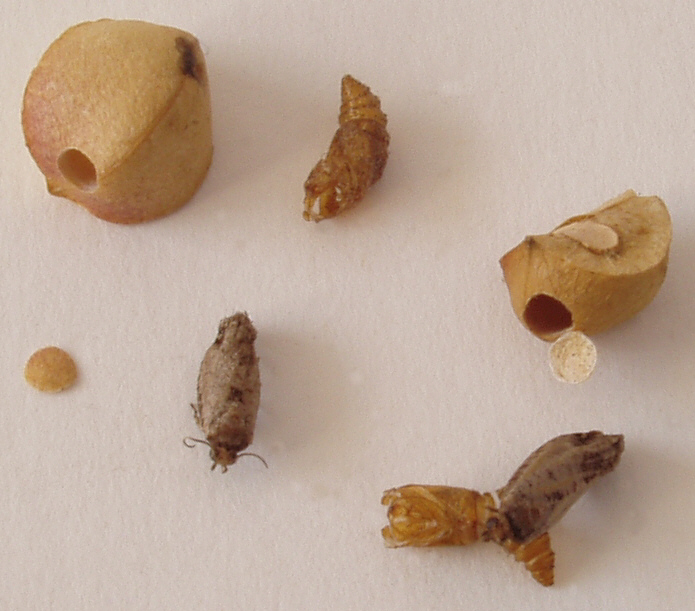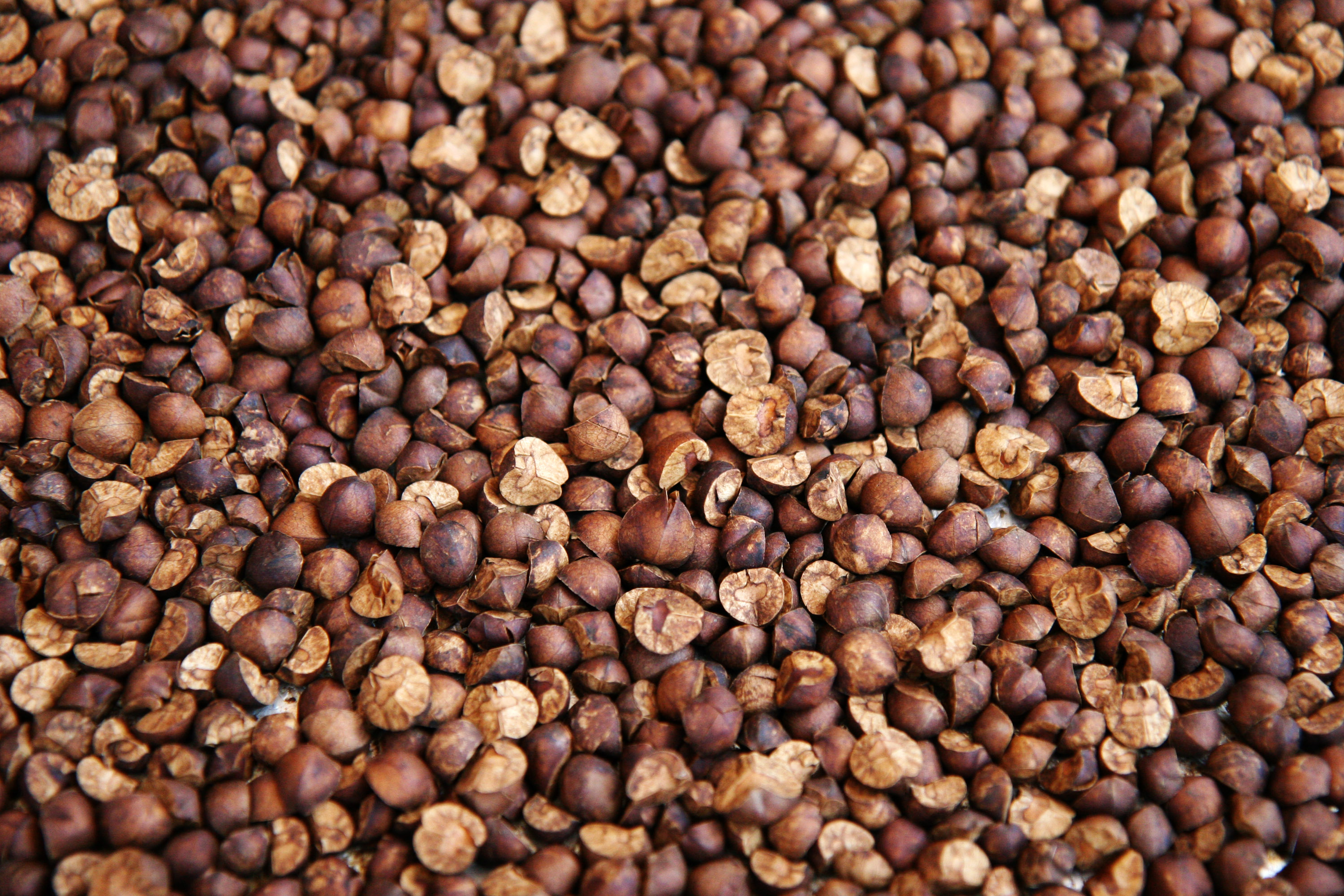Mexican Jumping Bean on:
[Wikipedia]
[Google]
[Amazon]

 Mexican jumping beans () are seed pods that have been inhabited by the
Mexican jumping beans () are seed pods that have been inhabited by the  Physicists at Seattle University theorize, using
Physicists at Seattle University theorize, using

 Mexican jumping beans () are seed pods that have been inhabited by the
Mexican jumping beans () are seed pods that have been inhabited by the larva
A larva (; : larvae ) is a distinct juvenile form many animals undergo before metamorphosis into their next life stage. Animals with indirect development such as insects, some arachnids, amphibians, or cnidarians typically have a larval phase ...
of a small moth ('' Cydia saltitans'') and are native to Mexico
Mexico, officially the United Mexican States, is a country in North America. It is the northernmost country in Latin America, and borders the United States to the north, and Guatemala and Belize to the southeast; while having maritime boundar ...
. The pod is usually tan to brown. They are from the shrub
A shrub or bush is a small to medium-sized perennial woody plant. Unlike herbaceous plants, shrubs have persistent woody stems above the ground. Shrubs can be either deciduous or evergreen. They are distinguished from trees by their multiple ...
'' Sebastiania pavoniana'', often also referred to as "jumping bean". However, they are not related to actual bean
A bean is the seed of some plants in the legume family (Fabaceae) used as a vegetable for human consumption or animal feed. The seeds are often preserved through drying (a ''pulse''), but fresh beans are also sold. Dried beans are traditi ...
s (legume
Legumes are plants in the pea family Fabaceae (or Leguminosae), or the fruit or seeds of such plants. When used as a dry grain for human consumption, the seeds are also called pulses. Legumes are grown agriculturally, primarily for human consum ...
plants), but rather to spurges. The beans are considered non-toxic but are not generally eaten. In the spring, when the shrub is flowering, moths lay their eggs on the shrub's hanging seedpods. When the eggs hatch, tiny larvae bore into the immature green pods and begin to devour the seeds. The pods ripen, fall to the ground and separate into three smaller segments, and those segments are called Mexican jumping beans. As the tiny larvae inside curl up and uncurl, they hit the capsule's wall, and the bean appears to jump. They move more as temperatures rise. The larva eats away the inside of the bean (until it becomes hollow) and attaches itself to the inside of the bean with silk-like thread.
 Physicists at Seattle University theorize, using
Physicists at Seattle University theorize, using Brownian motion
Brownian motion is the random motion of particles suspended in a medium (a liquid or a gas). The traditional mathematical formulation of Brownian motion is that of the Wiener process, which is often called Brownian motion, even in mathematical ...
as a model, that the larva's random walk
In mathematics, a random walk, sometimes known as a drunkard's walk, is a stochastic process that describes a path that consists of a succession of random steps on some Space (mathematics), mathematical space.
An elementary example of a rand ...
helps to find shade to survive on hot days. Although it does not optimize for finding shade quickly, the strategy minimizes the chances of never finding shade when shade is sparse.
The larva may live for months inside the bean with varying periods of dormancy. If the larva has adequate conditions of moisture and temperature, it will live long enough to go into a pupal stage. In the spring, the moth forces itself out of the bean through a round "trap door", leaving behind the pupal casing. After its metamorphosis
Metamorphosis is a biological process by which an animal physically develops including birth transformation or hatching, involving a conspicuous and relatively abrupt change in the animal's body structure through cell growth and different ...
, the small, silver and gray-colored moth lives for no more than a few days.
Novelty
When the bean is warmed (by being held in the palm of the hand, for example) the larva will move to eat, pulling on the threads and causing the characteristic hop. Leaving the beans in a hot environment can kill the larva.Sources
The Mexican jumping bean comes from the mountains in thestates
State most commonly refers to:
* State (polity), a centralized political organization that regulates law and society within a territory
**Sovereign state, a sovereign polity in international law, commonly referred to as a country
**Nation state, a ...
of Sonora
Sonora (), officially Estado Libre y Soberano de Sonora (), is one of the 31 states which, along with Mexico City, comprise the Administrative divisions of Mexico, Federal Entities of Mexico. The state is divided into Municipalities of Sonora, 72 ...
, Sinaloa
Sinaloa (), officially the (), is one of the 31 states which, along with Mexico City, compose the Federal Entities of Mexico. It is divided into 18 municipalities, and its capital city is Culiacán Rosales.
It is located in northwest Mexic ...
, and Chihuahua. Álamos, Sonora, calls itself the "Jumping Bean Capital of the World". They are in an area approximately where the '' Sebastiania pavoniana'' host tree grows. During the spring, moths emerge from last year's beans and deposit their eggs on the flower of the host tree.
See also
* '' Spirostachys africana'', a related plant parasitized by a similar moth * '' Emporia melanobasis'', the moth parasite of ''Spirostachys africana'' * '' Sea-Monkeys'' *Formicarium
A formicarium (: formicaria or formicariums) or ant farm is a vivarium which is designed primarily for the study of ant colonies and how ants behave and for the enjoyment of ants as pets. Those who study ant behavior are known as myrmecologists ...
* '' Mighty Beanz'', a plastic toy line in which the toys resemble Mexican jumping beans
References
{{DEFAULTSORT:Mexican Jumping Bean Grapholitini Articles containing video clips Running gags Novelty items Culture of Mexico Hippomaneae